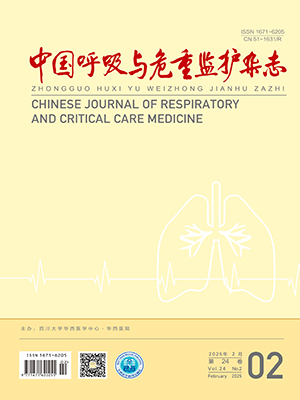Objective To determine the usefulness of serial measurements of the rapid shallow breathing index ( f/VT , RSBI) as a predictor for successfully weaning of patients undergoing prolonged mechanical ventilation ( gt; 72 hours) . Methods 76 mechanically ventilated patients were prospectively analyzed. 120-min spontaneous breathing trial was conducted after the patients having fullfiled the traditional weaning criteria, and RSBI were continuously monitored by the ventilator at five time points ( 5, 15, 30,60, and 120 min) . A repeated measure of general linear model in SPSS 15.0 was conducted to analyze the data. Results 62 patients completed 120-minute spontaneous breath trial and in which 20 patients failed weaning. There was no significant difference of RSBI at five time points during weaning ( P gt;0. 05) . But the
variation trends of RSBI during weaning time were significant different between the successful weaning patients and the failed weaning patients ( P lt; 0. 05) . Conclusions In patients undergoing prolonged mechanical ventilation, the variation trend of RSBI is more valuable than single RSBI in the prediction of
successful weaning.
Citation: MA Yujie,CAO Xiangyuan.. Variation Trend of Rapid Shallow Breathing Index in Prediction of Ventilator Weaning Process. Chinese Journal of Respiratory and Critical Care Medicine, 2010, 9(6): 567-569. doi: Copy
Copyright © the editorial department of Chinese Journal of Respiratory and Critical Care Medicine of West China Medical Publisher. All rights reserved




